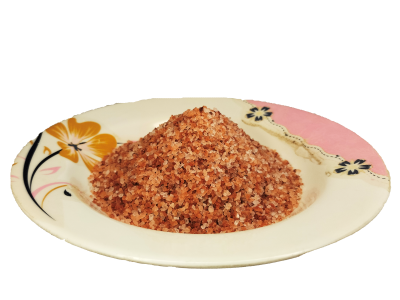Edible salt, commonly referred to as table salt, is an essential ingredient in our daily lives. Beyond its culinary uses, it is also crucial for numerous biological processes, such as maintaining fluid balance, supporting nerve function, and muscle contraction. Salt has been valued throughout history and is still highly regarded today for its health benefits, flavor-enhancing qualities, and various applications in both food and industry. This guide delves into the chemical formula, properties, types, and uses of edible salt.
Algohar World natural salt lamps that are believed to provide various benefits, combining both the aesthetic appeal and the potential health advantages associated with Himalayan salt lamps.
The Chemical Formula of Edible Salt
Chemical Structure and Formula
The chemical formula of edible salt is **NaCl**, which stands for sodium chloride. It is an ionic compound formed through the combination of two elements: sodium (Na) and chlorine (Cl). In its pure form, sodium chloride is a crystalline solid, with each sodium ion (Na⁺) and chloride ion (Cl⁻) arranged in a repeating lattice structure, resulting in a highly stable compound.
Formation of Sodium Chloride
Sodium chloride is formed through a process called **ionic bonding**. Here’s how the bonding occurs:
Sodium Atom (Na)
Sodium is a metallic element in group 1 of the periodic table and has one electron in its outer shell.
Chlorine Atom (Cl)
Chlorine is a non-metal element in group 17 (halogens) with seven electrons in its outer shell.
Ionic Bonding
Sodium donates its one outer electron to chlorine, achieving a stable electron configuration. This electron transfer creates a positively charged sodium ion (Na⁺) and a negatively charged chloride ion (Cl⁻).
Formation of NaCl
The oppositely charged ions attract each other and form an ionic bond, resulting in sodium chloride (NaCl).
Types of Edible Salt
Table Salt
Table salt is the most common form of edible salt and is refined to remove impurities. It typically contains added iodine, which helps prevent iodine deficiency. It is also often treated with anti-caking agents to prevent clumping.
Sea Salt
Sea salt is obtained through the evaporation of seawater and retains trace minerals like magnesium, calcium, and potassium. Its composition varies depending on the source, and it has a coarser texture and slightly different flavor compared to table salt.
Himalayan Pink Salt
Himalayan pink salt is mined from salt beds in the Himalayan region and has a characteristic pink color due to trace minerals, particularly iron oxide. It is less refined than table salt and is known for its unique mineral content.
Kosher Salt
Kosher salt has larger, coarser grains than table salt and is often preferred in cooking due to its mild flavor and ease of use. It’s named for its use in koshering meat, as it helps draw out blood.
Rock Salt
Rock salt, also known as halite, is a naturally occurring form of sodium chloride found in salt mines. It is less refined and may contain various impurities, making it suitable for industrial or de-icing purposes rather than direct consumption.
Production and Extraction of Edible Salt
Evaporation of Seawater
Seawater is evaporated in shallow pools, leaving behind salt crystals. The salt is then collected, cleaned, and sometimes refined before packaging. This method is widely used to produce sea salt.
Note: Sodium chloride, or edible salt chemical formula, is more than just a seasoning; it is a fundamental compound that supports human health, food preservation, industrial processes, and even household cleaning.
Mining Rock Salt
Rock salt is extracted from underground mines, where salt deposits are found in large quantities. The salt is crushed, purified, and often refined further to produce table salt or kosher salt.
Solution Mining
In solution mining, water is pumped into underground salt deposits to dissolve the salt. The resulting brine solution is then pumped to the surface and evaporated, leaving behind purified salt crystals. This method is commonly used for producing table salt and other refined salts.
The Role of Sodium Chloride in Human Health
Electrolyte Balance and Hydration
Sodium chloride plays a crucial role in maintaining electrolyte balance within the body, which is essential for proper hydration. Sodium ions help regulate water movement in and out of cells, aiding in hydration and ensuring cellular function.
Nerve Transmission and Muscle Function
Sodium ions are vital for nerve impulse transmission. They facilitate communication between nerve cells by generating action potentials. Chloride ions also play a role in muscle contraction, making sodium chloride essential for both nerve and muscle function.
Blood Pressure Regulation
Sodium intake affects blood pressure levels. While small amounts of sodium are necessary for health, excessive intake can increase blood pressure, which may lead to hypertension. Balancing sodium intake is important for maintaining cardiovascular health.
Conclusion: Understanding Edible Salt’s Role and Uses
Salt, or sodium chloride, is an essential compound that plays multiple roles in human health, culinary applications, and industry. Its chemical formula, NaCl, is simple, yet its impact is profound. While salt is necessary for various bodily functions, excessive intake poses health risks, highlighting the need for balance and moderation. Edible salt, in all its forms, remains a valuable and versatile substance, vital to human culture and biology.
